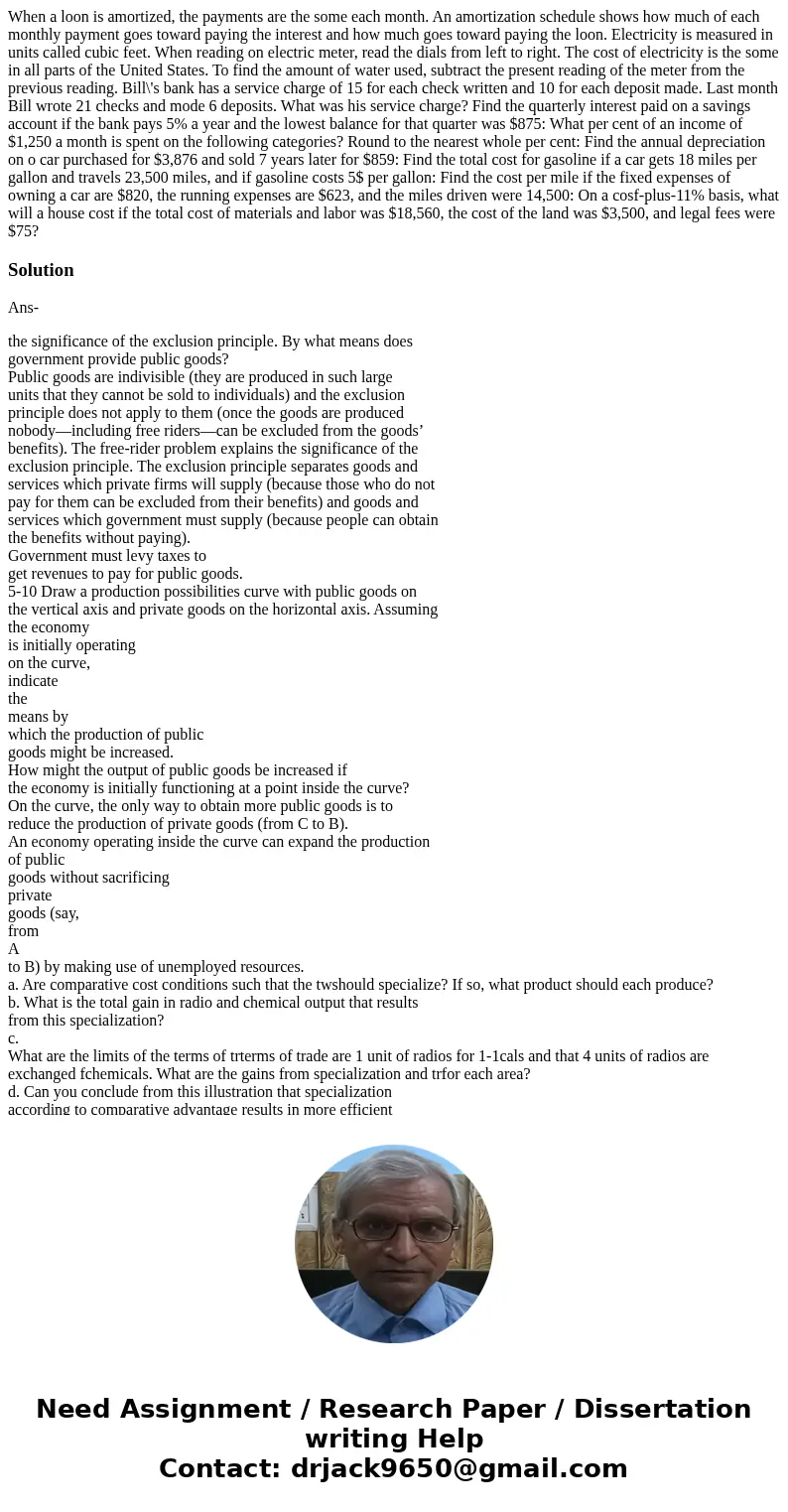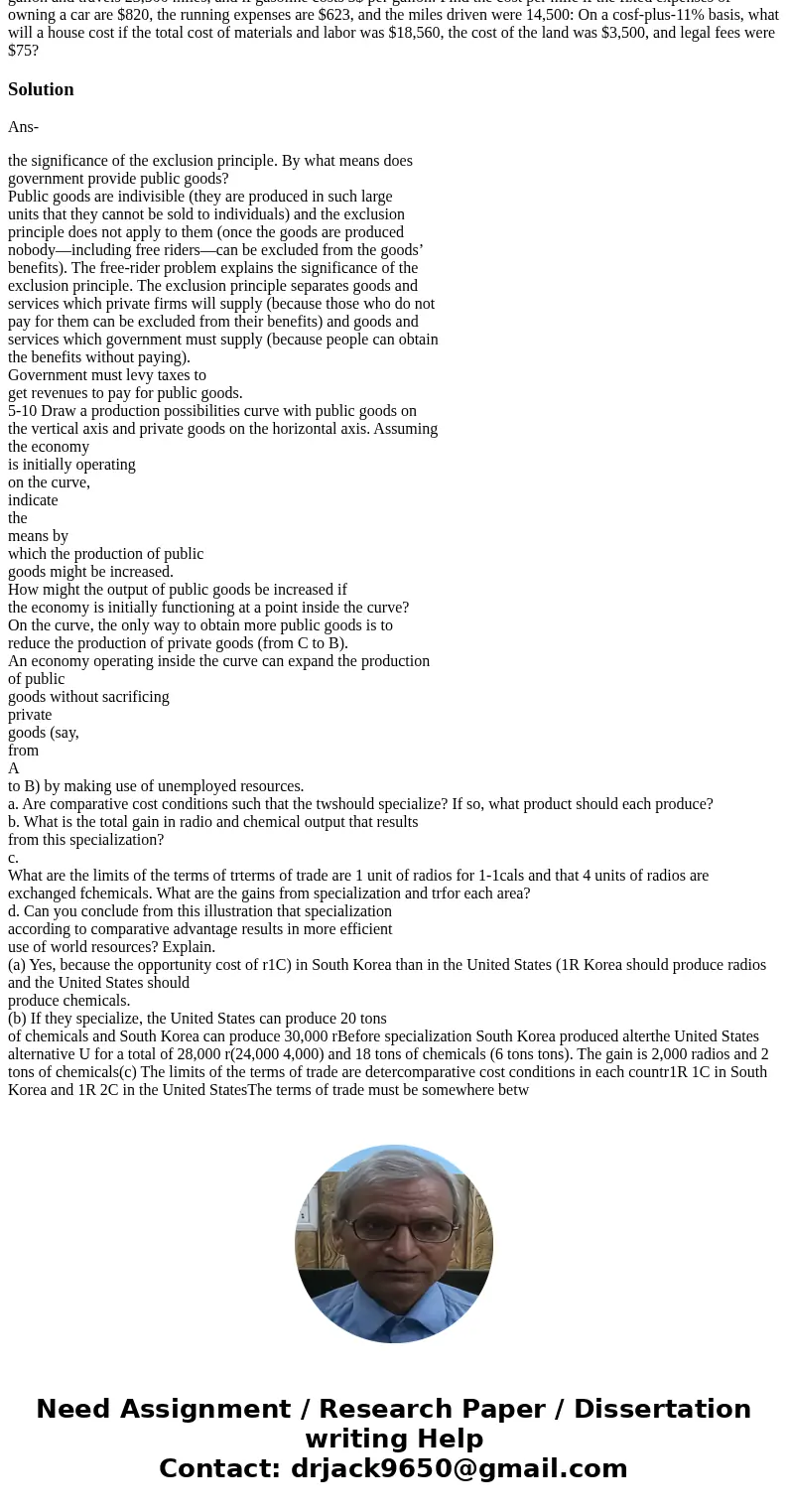When a loon is amortized the payments are the some each mont
Solution
Ans-
the significance of the exclusion principle. By what means does
government provide public goods?
Public goods are indivisible (they are produced in such large
units that they cannot be sold to individuals) and the exclusion
principle does not apply to them (once the goods are produced
nobody—including free riders—can be excluded from the goods’
benefits). The free-rider problem explains the significance of the
exclusion principle. The exclusion principle separates goods and
services which private firms will supply (because those who do not
pay for them can be excluded from their benefits) and goods and
services which government must supply (because people can obtain
the benefits without paying).
Government must levy taxes to
get revenues to pay for public goods.
5-10 Draw a production possibilities curve with public goods on
the vertical axis and private goods on the horizontal axis. Assuming
the economy
is initially operating
on the curve,
indicate
the
means by
which the production of public
goods might be increased.
How might the output of public goods be increased if
the economy is initially functioning at a point inside the curve?
On the curve, the only way to obtain more public goods is to
reduce the production of private goods (from C to B).
An economy operating inside the curve can expand the production
of public
goods without sacrificing
private
goods (say,
from
A
to B) by making use of unemployed resources.
a. Are comparative cost conditions such that the twshould specialize? If so, what product should each produce?
b. What is the total gain in radio and chemical output that results
from this specialization?
c.
What are the limits of the terms of trterms of trade are 1 unit of radios for 1-1cals and that 4 units of radios are exchanged fchemicals. What are the gains from specialization and trfor each area?
d. Can you conclude from this illustration that specialization
according to comparative advantage results in more efficient
use of world resources? Explain.
(a) Yes, because the opportunity cost of r1C) in South Korea than in the United States (1R Korea should produce radios and the United States should
produce chemicals.
(b) If they specialize, the United States can produce 20 tons
of chemicals and South Korea can produce 30,000 rBefore specialization South Korea produced alterthe United States alternative U for a total of 28,000 r(24,000 4,000) and 18 tons of chemicals (6 tons tons). The gain is 2,000 radios and 2 tons of chemicals(c) The limits of the terms of trade are detercomparative cost conditions in each countr1R 1C in South Korea and 1R 2C in the United StatesThe terms of trade must be somewhere betw


 Homework Sourse
Homework Sourse